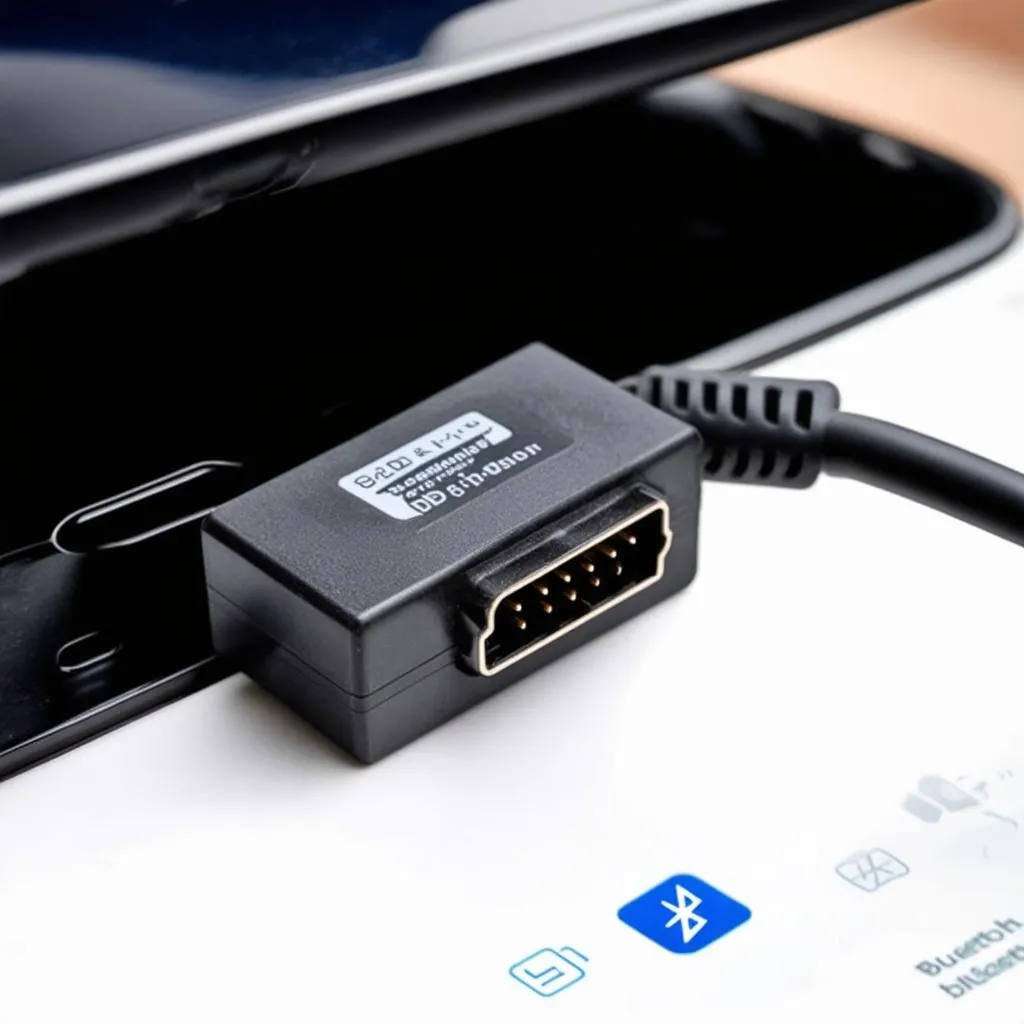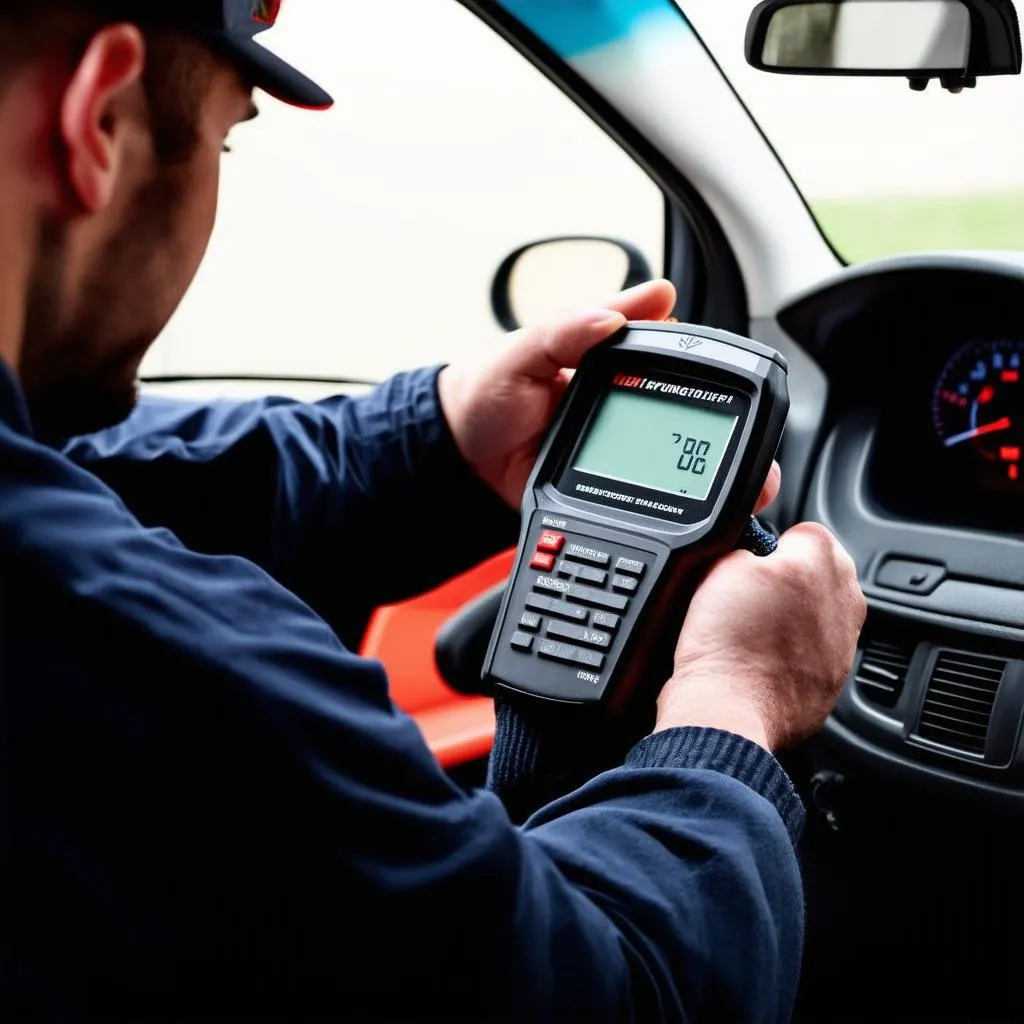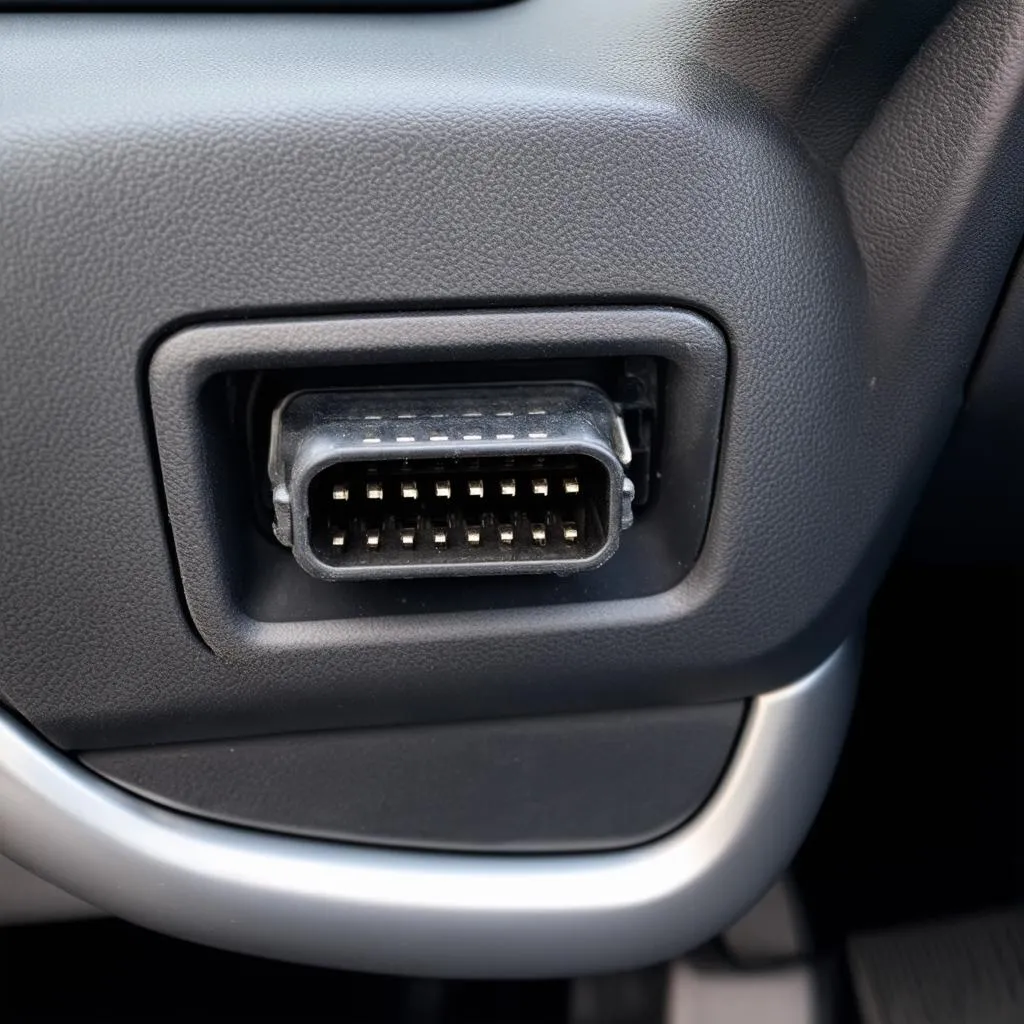Ever wondered what those cryptic codes flashing on your car’s dashboard mean? Or maybe you’re curious about how mechanics diagnose problems in your vehicle? The answer lies in a sophisticated system called OBD, or On-Board Diagnostics. It’s like a hidden language your car speaks to communicate its health and well-being.
What is OBD and Why is it Important?
OBD is a standardized system present in most vehicles manufactured since 1996. It’s like a built-in doctor for your car, constantly monitoring various systems like the engine, transmission, and emissions. When something goes wrong, OBD sends out warning signals, often in the form of those dreaded “check engine” lights.
Imagine this: you’re driving down the road, enjoying the scenery, and suddenly your car starts making strange noises. You pull over, and a flashing red light appears on the dashboard. Panic sets in, right? But hold on, the OBD system is here to help.
Understanding the OBD System: A Deep Dive
OBD is a diagnostic system that uses sensors to monitor a car’s vital functions. These sensors send information to the car’s computer, which then processes the data and generates codes to indicate potential problems.
Think of OBD like a silent guardian, working tirelessly in the background to ensure your car’s smooth operation. It’s a remarkable feat of engineering that helps mechanics quickly pinpoint issues and fix them before they become major headaches.
How Does OBD Work?
The OBD system works through a network of sensors and a control module called the Engine Control Unit (ECU). The ECU analyzes the data from these sensors and compares it to pre-programmed parameters. If any deviation is detected, the ECU will store a diagnostic trouble code (DTC) and may illuminate a warning light on the dashboard.
This process is similar to how a doctor analyzes your blood pressure, heart rate, and other vital signs to identify potential health problems.
Types of OBD Systems
There are two primary types of OBD systems:
- OBD-I: Introduced in the 1980s, this system used a less standardized format and required specific car-specific tools to read codes.
- OBD-II: This system became the standard for all cars manufactured after 1996 and uses a standardized protocol that allows for universal compatibility with diagnostic scanners.
Benefits of Using OBD Scanners
OBD scanners are devices that plug into the OBD port located in your car’s cabin. These scanners can read and interpret the DTCs stored in the ECU, providing valuable information about your car’s health.
Here are some of the benefits of using OBD scanners:
- Identify Potential Problems Early: By reading DTCs, you can identify potential problems before they escalate into major repairs.
- Save Money on Repairs: Early detection of issues can prevent costly repairs down the road.
- Monitor Your Car’s Performance: Some OBD scanners can track your car’s performance data, such as fuel consumption, engine temperature, and more.
- Improve Fuel Efficiency: By identifying and fixing issues that can impact fuel consumption, you can save money on gas.
- Boost Your Car’s Longevity: By addressing potential issues promptly, you can extend the lifespan of your vehicle.
OBD Scanner for European Cars
The OBD system is universal for all cars manufactured after 1996, but some vehicles, especially European cars, may have slightly different protocols.
If you own a European car, it’s recommended to use a Dealer Scanner specifically designed for European vehicles. These scanners are more sophisticated and can read and interpret the specific codes used by European manufacturers.
Frequently Asked Questions About OBD
Here are some common questions people ask about OBD:
Q: Can I clear error codes myself with an OBD scanner?
A: Yes, most OBD scanners allow you to clear error codes. However, it’s important to understand that clearing a code doesn’t necessarily mean the problem is resolved. It’s always best to consult a qualified mechanic to diagnose and address the underlying issue.
Q: What are the different types of OBD scanners?
A: OBD scanners come in various forms, from basic code readers to advanced diagnostic tools. The type of scanner you need depends on your individual needs and budget.
Q: Can I use an OBD scanner to improve my car’s performance?
A: Some OBD scanners offer features that allow you to modify your car’s performance settings. However, it’s essential to use these features with caution and consult with a professional if you’re not sure what you’re doing.
Q: Where can I find an OBD scanner?
A: OBD scanners are readily available online and at auto parts stores. You can also find them at some automotive dealerships.
Q: How do I choose the right OBD scanner?
A: Consider your budget, the features you need, and the compatibility with your vehicle when choosing an OBD scanner.
Q: What is the difference between OBD-I and OBD-II?
A: OBD-I is an older, less standardized system, while OBD-II is the current standard and offers more comprehensive diagnostics and compatibility with a wider range of scanners.
Q: Can I use an OBD scanner to modify my car’s emissions?
A: Modifying your car’s emissions can be illegal and harmful to the environment. It’s not recommended to use an OBD scanner to alter your car’s emissions system.
Q: Is there a connection between OBD and car insurance?
A: Some insurance companies offer discounts to drivers who use OBD devices to monitor their driving habits.
What to Do When You See a “Check Engine” Light
If you see the “Check Engine” light illuminate on your dashboard, don’t panic! It’s a signal from the OBD system that there’s something your car needs attention.
Here’s what you can do:
- Check the OBD codes: Use an OBD scanner to read the diagnostic trouble codes stored in the ECU.
- Research the Codes: Look up the meaning of the codes online or consult a repair manual.
- Consult a Mechanic: If you’re unsure about the meaning of the codes or if the problem seems serious, take your car to a qualified mechanic.
Conclusion: The Power of OBD
The OBD system is an invaluable tool for car owners and mechanics. By understanding how it works and using OBD scanners effectively, you can keep your car running smoothly and save money on repairs.
Want to know more about OBD and how to use it to your advantage?
Leave a comment below with your questions, or contact our team of automotive experts at Whatsapp: +84767531508. We’re here to help you unlock the secrets of your car’s onboard diagnostics!
 OBD scanner device
OBD scanner device
 OBD code reader
OBD code reader
 OBD port location
OBD port location